
Gerald Holmes, Strawberry Center, Cal Poly San Luis Obispo, Bugwood.org
Powdery mildew lesions caused by Podosphaera xanthii nearly cover the entire leaf surface. July 1995
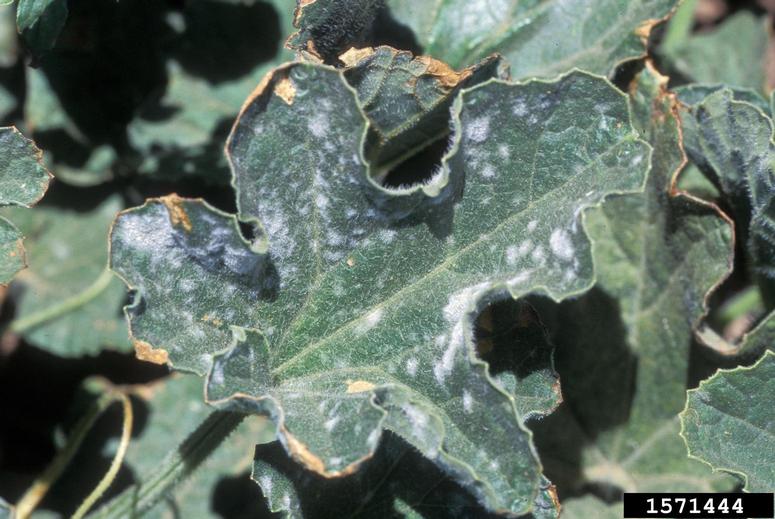
Gerald Holmes, Strawberry Center, Cal Poly San Luis Obispo, Bugwood.org
Powdery mildew lesions caused by Podosphaera xanthii. July 1995
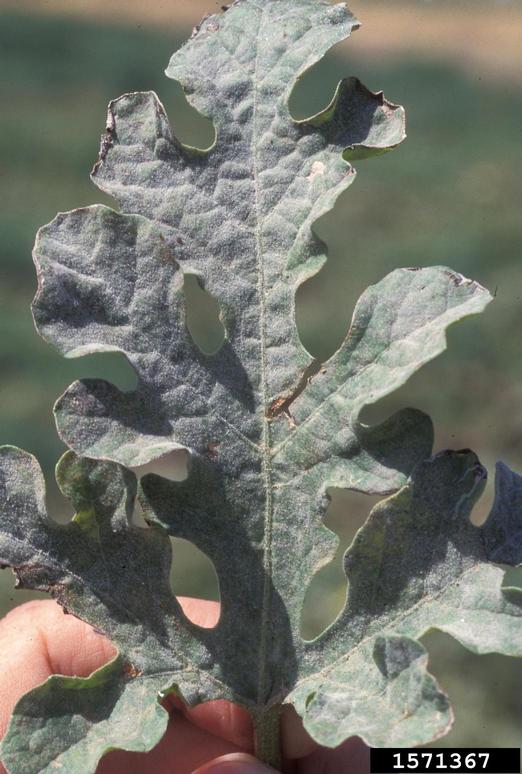
Gerald Holmes, Strawberry Center, Cal Poly San Luis Obispo, Bugwood.org
Watermelon leaf showing an even distribution of powdery mildew (Podosphaera xanthii) over the entire leaf surface. June 1995
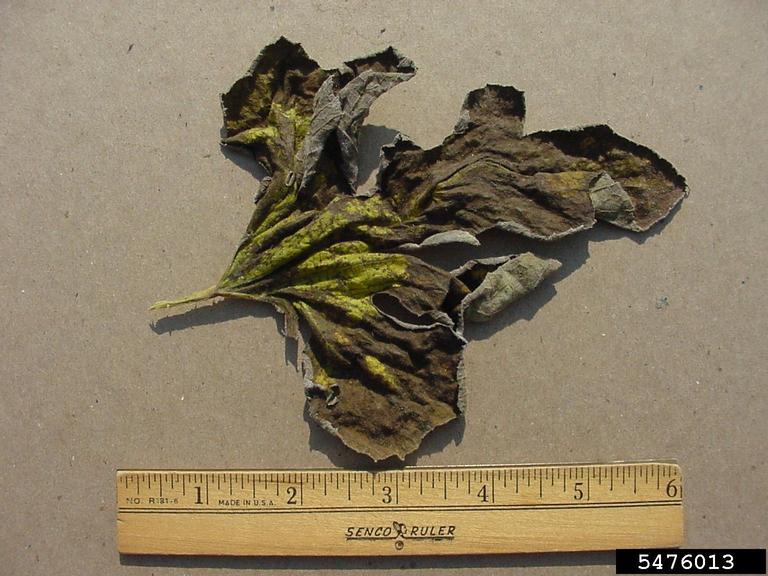
Paul Bachi, University of Kentucky Research and Education Center, Bugwood.org
Top surface of single pumpkin leaf infected with cucurbit powdery mildew.
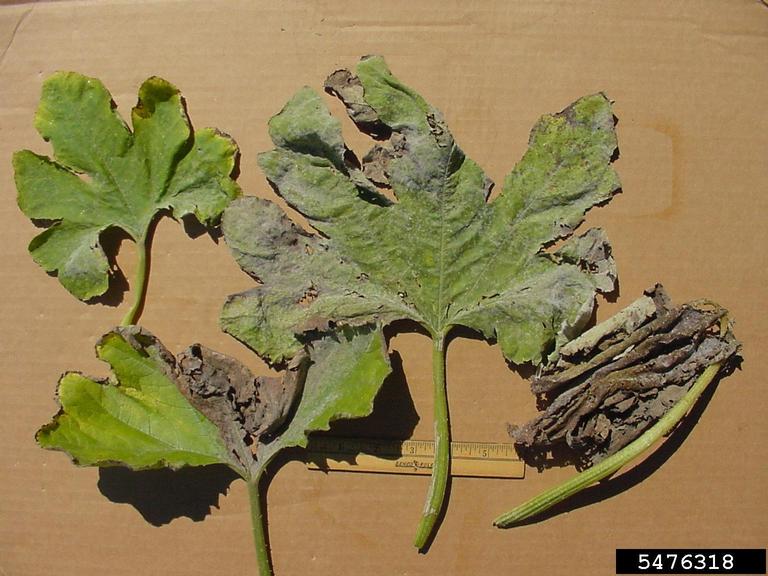
Paul Bachi, University of Kentucky Research and Education Center, Bugwood.org
Upper surface of pumpkin leaves infected with the Cucurbit Powdery mildew fungus, Podosphaera xanthii.
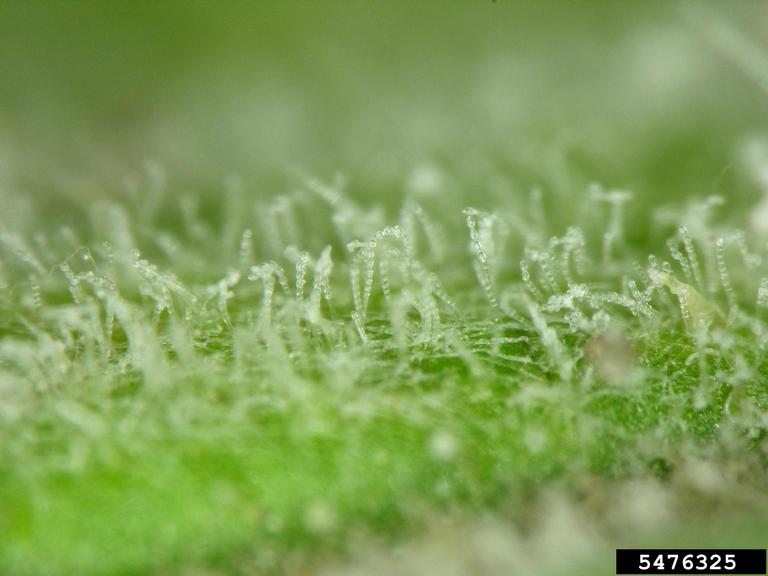
Paul Bachi, University of Kentucky Research and Education Center, Bugwood.org
Spore-producing bodies (conidiophores) and chains of asexual spores (conida) of the Cucurbit Powdery mildew fungus, Podosphaera xanthii.
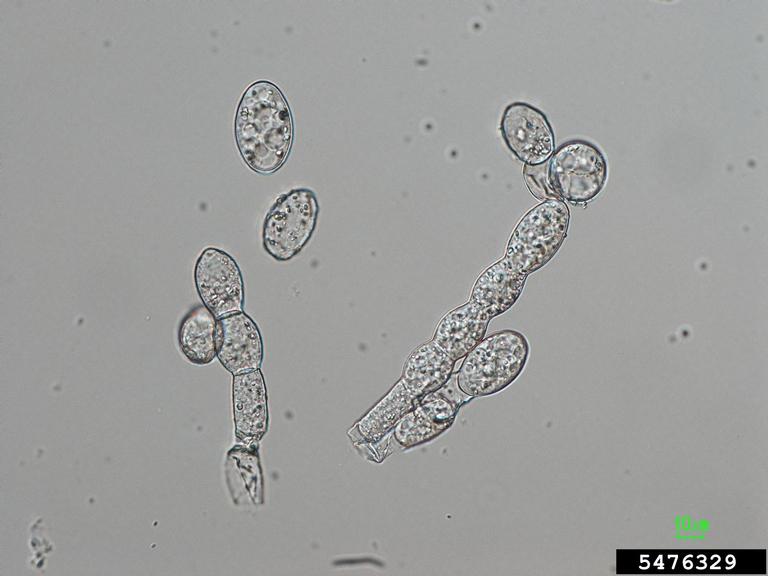
Paul Bachi, University of Kentucky Research and Education Center, Bugwood.org
Asexual spore-producing stractures (conidiophores) and spores (conidia) of the Cucurbit Powdery mildew fungus, Podosphaera xanthii. The fungal structures were not exposed to 3% KOH solution.

Paul Bachi, University of Kentucky Research and Education Center, Bugwood.org
Asexual spores (conidia) of the Cucurbit Powdery mildew fungus, Podosphaera xanthii. The spores were not exposed to 3% KOH solution.

Powdery mildew lesions caused by Podosphaera xanthii nearly cover the entire leaf surface. July 1995

Powdery mildew lesions caused by Podosphaera xanthii. July 1995

Watermelon leaf showing an even distribution of powdery mildew (Podosphaera xanthii) over the entire leaf surface. June 1995

Top surface of single pumpkin leaf infected with cucurbit powdery mildew.

Upper surface of pumpkin leaves infected with the Cucurbit Powdery mildew fungus, Podosphaera xanthii.

Spore-producing bodies (conidiophores) and chains of asexual spores (conida) of the Cucurbit Powdery mildew fungus, Podosphaera xanthii.

Asexual spore-producing stractures (conidiophores) and spores (conidia) of the Cucurbit Powdery mildew fungus, Podosphaera xanthii. The fungal structures were not exposed to 3% KOH solution.

Asexual spores (conidia) of the Cucurbit Powdery mildew fungus, Podosphaera xanthii. The spores were not exposed to 3% KOH solution.






